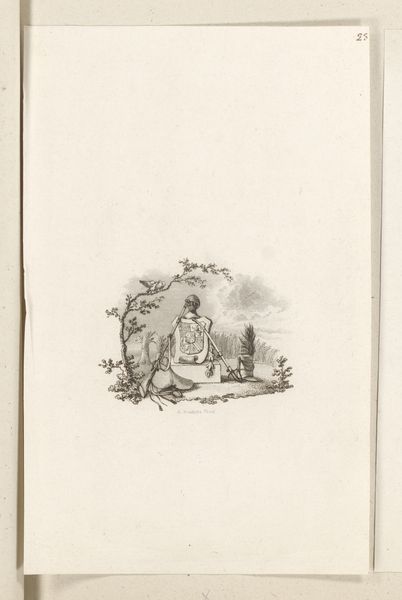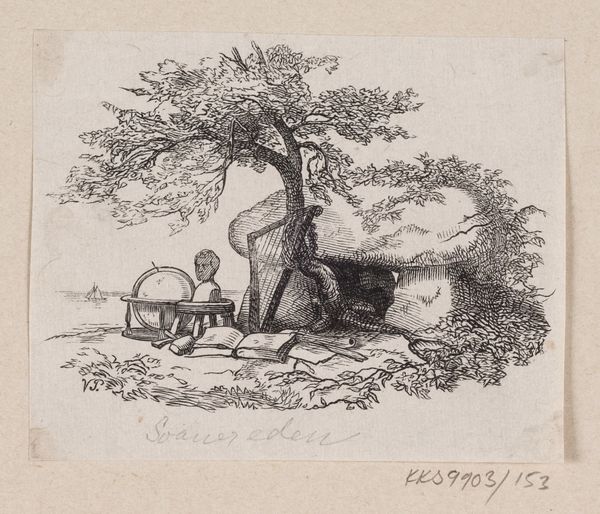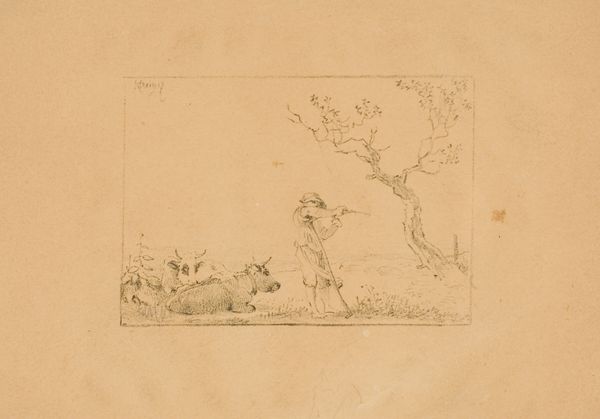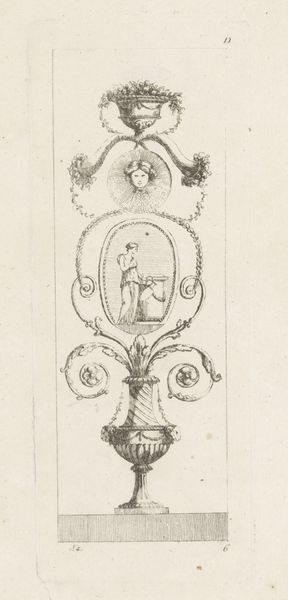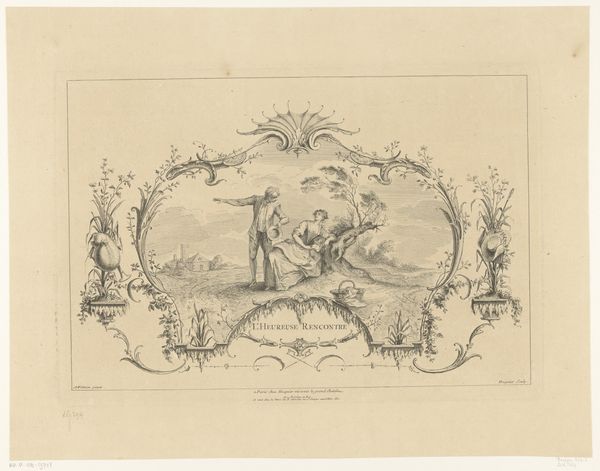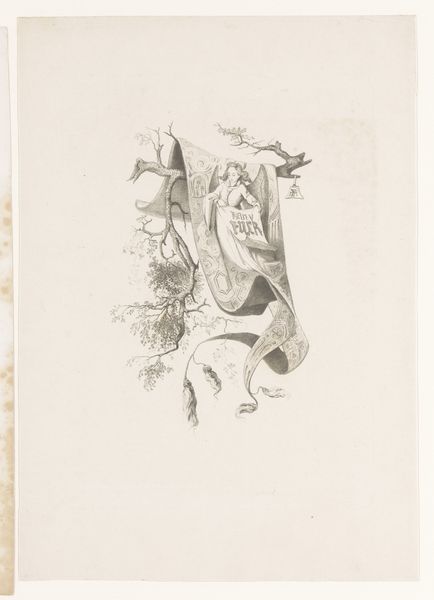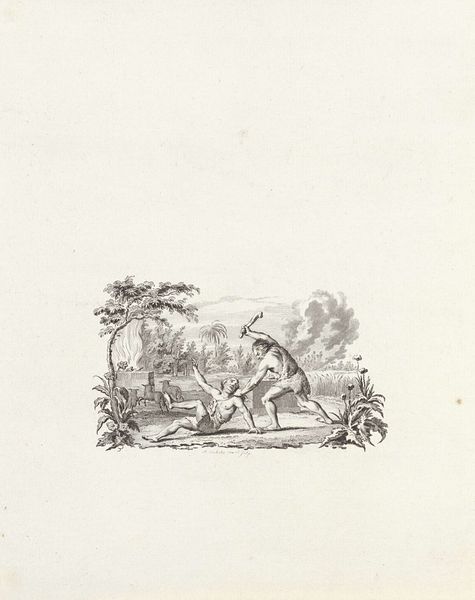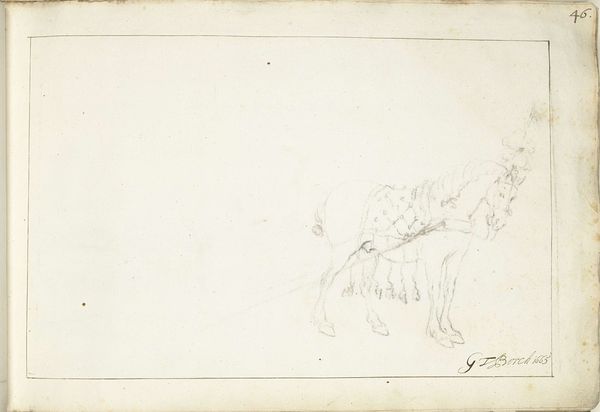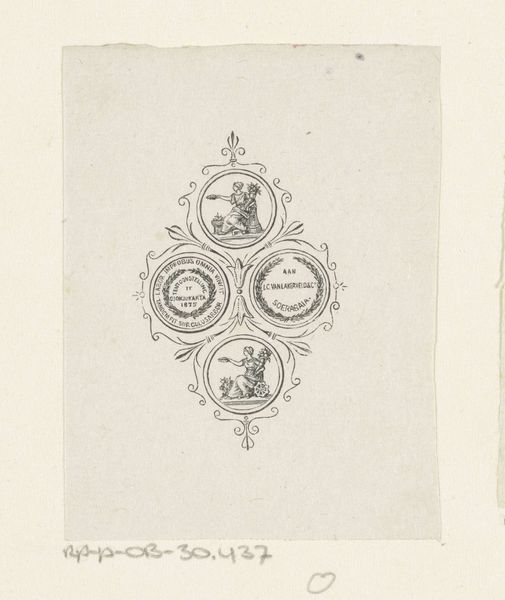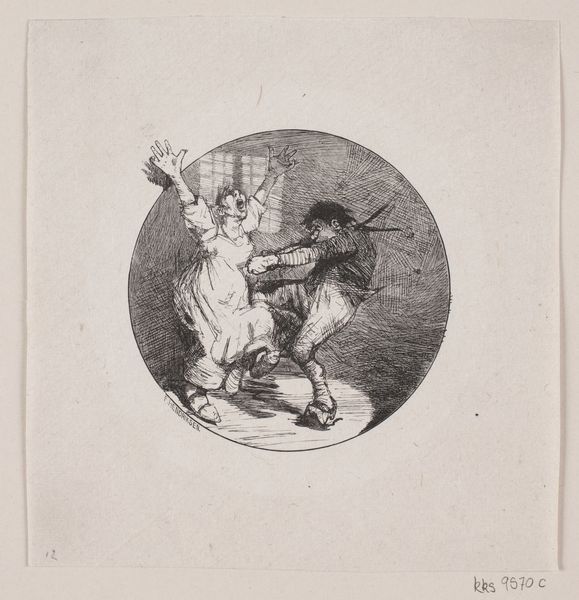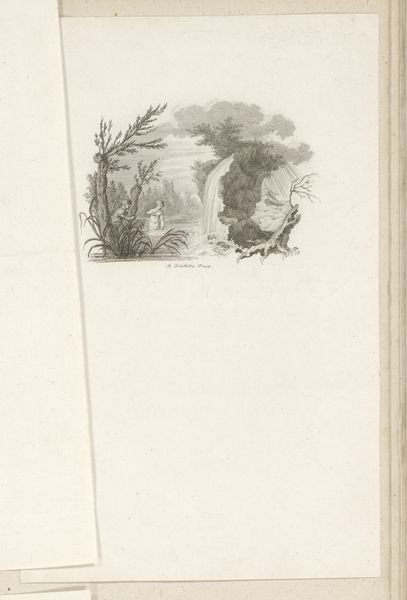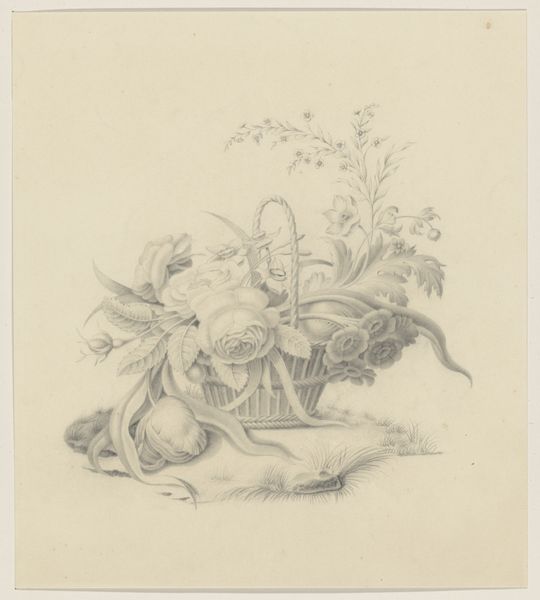
drawing, ink
#
drawing
#
allegory
#
pencil sketch
#
ink
#
geometric
Copyright: Rijks Museum: Open Domain
Editor: Here we have Johannes van Dregt’s "Medaillon met allegorische voorstelling van de Zomer," made sometime between 1747 and 1807. It’s a drawing in ink and pencil, currently held at the Rijksmuseum. It feels delicate and precise. What visual cues tell us this represents summer, and how might those symbols have resonated at the time? Curator: It's interesting to consider the immediate visual language. A putto figure—an almost universally recognizable symbol of innocence, perhaps—announces something, blowing on a… what appears to be a bundle of wheat. The wheat, of course, signifies harvest, abundance. Consider its placement—above a serpent. How do those images play against one another? Editor: I hadn't really noticed the serpent. Does it represent something darker, maybe mortality, balanced against the life-affirming wheat? Curator: Potentially. The serpent's circular pose, biting its own tail—an ouroboros—is a powerful symbol. It often speaks to cyclical time, eternity, and rebirth. Paired with a seasonal figure like "summer," do you think van Dregt is referencing the natural cycles of growth, decay, and renewal? The joy of summer held in a greater context? Editor: That’s a compelling idea! It makes me think about how even joyous times are fleeting and interconnected with larger natural forces. Curator: Exactly. Artists like van Dregt weren't simply creating pretty pictures; they were weaving complex tapestries of meaning for viewers well-versed in such symbolism. It’s rewarding when those tapestries continue to unravel over time. Editor: I agree, diving into the historical symbolism definitely enriches my understanding of the art. It shifts my perspective.
Comments
No comments
Be the first to comment and join the conversation on the ultimate creative platform.

